Utagawa Hirokage has a special humor, which, though at times edging on corny, is often sly and even tinged with eroticism.
- Get link
- X
- Other Apps
Nothing Is Off-Limits in Hirokage’s Humorous Ukiyo-e Prints
Utagawa Hirokage has a special humor, which, though at times edging on corny, is often sly and even tinged with eroticism.
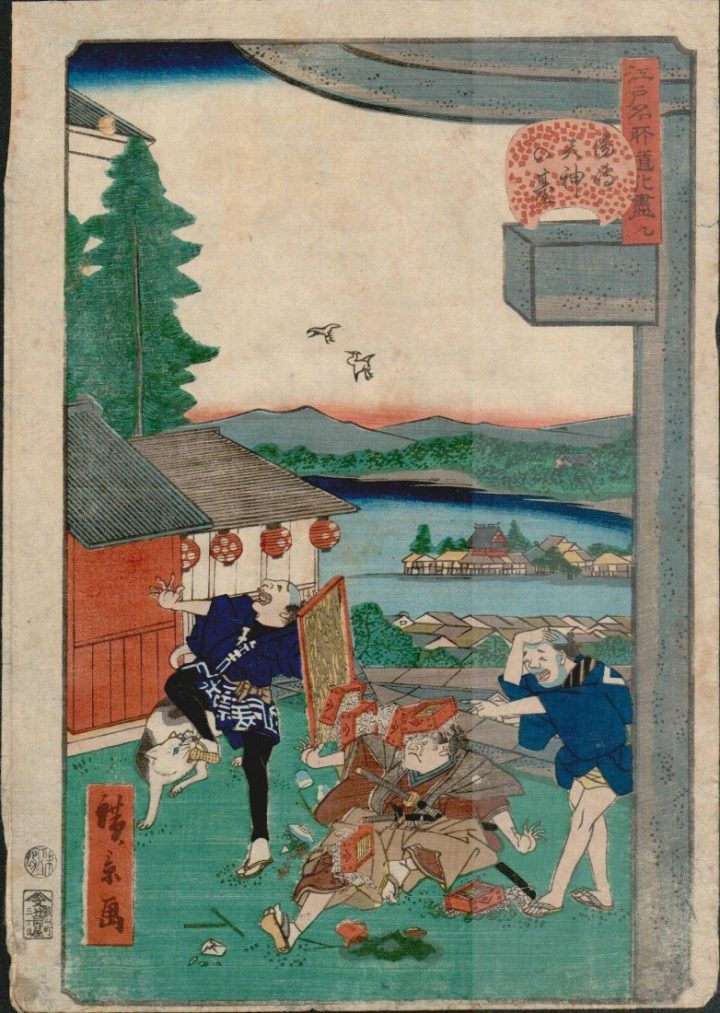
Many ar

Ma
Utagawa Hirokage, “Falling i
Utagawa Hirokage, “Falling in Snow,” (1860), estimate: $200-n Snow,” (1860), estimate: $200-ny artists during Japan’s Edo period designed ukiyo-ewoodblock prints, but the works of Utagawa Hirokage stand out from many of these “pictures of the floating world” for their affinity for the absurd. A student of the famed Utagaway Hiroshige, Hirokage is perhaps most known for an incredible triptych of a battle between fruits, vegetables, and fish — but also for a successful series he published around 1860 titled Edo meisho doke zukushi, or Joyful Events in Famous Places in Edo. The 46 images set in present-day Tokyo are simply bizarre: scenes of a tiny octopus attacking people on a beach or of foxes carrying pumpkins are so ridiculous you can’t help but chuckle. Hirokage, in a sense, was churning out the memes of his time.
tists during Japan’s Edo period designed ukiyo-ewoodblock prints, but the works of Utagawa Hirokage stand out from many of these “pictures of the floating world” for their affinity for the absurd. A student of the famed Utagaway Hiroshige, Hirokage is perhaps most known for an incredible triptych of a battle between fruits, vegetables, and fish — but also for a successful series he published around 1860 titled Edo meisho doke zukushi, or Joyful Events in Famous Places in Edo. The 46 images set in present-day Tokyo are simply bizarre: scenes of a tiny octopus attacking people on a beach or of foxes carrying pumpkins are so ridiculous you can’t help but chuckle. Hirokage, in a sense, was churning out the memes of his time.

These prints may be found in a number of museums, but eight from the comic series are currently up for auction, presented by Jasper52 in an online sale of Japanese woodblock prints. Although just a fraction of the artist’s entire volume, they relay Hirokage’s special humor, which, though at times edging on corny, is often sly and even tinged with eroticism.
Amid a winter wonderland of softly falling snow or near a serene landscape of mountains and an azure lake, his characters fall on their butts as they cross bridges or are struck in the face by gold coins, dropped to earth by a passing bird. In one print, men laugh at a samurai who has just been splatted by an unwieldy tray of soba noodles; in another, a giant brush, of all things, has fallen from the sky onto a boat, where it suggestively tickles a woman beneath her kimono. In Hirokage’s world, nothing, clearly, is off limits. What’s more, he offers a specific form of entertainment without forgoing attention to design and a draftsman’s skill.
“If you look at Hiroshige’s figures, you will immediately see the similarities with Hirokage’s,” Nicholas Dinerstein of Jasper52 told Hyperallergic. “Hiroshige’s figures often had dramatic poses, and Hirokage takes it one step further, pushing the dramatic pose into something comical.
“There is certainly a bit of schadenfreude,” Dinerstein continued. “However, all of the comedic parts of the prints are lighthearted (mainly people falling down or being hit in the head), so I would consider it a slight schadenfreude. It’s almost as if Hirokage is seeing absurdity in everyday life and uses his works to highlight it in a way that is apparent to everyone.”
Scanning through the 115 lots, which also include other works by Edo-era artists from Hiroshige to Utagawa Kuniyoshi, it’s clear that Hirokage took the traditional Japanese woodblock and put his own spin on it, straying from the typical, tame views of landscapes, illustrations of folk tales, and portraits of actors and beautiful women that many others designed. More modern prints that are for sale, too, offer straightforward views of the natural world. These are stunning, from Toshi Yoshida’s intricate picture of cormorants perched on rocks to Hodo Nishimura’s study of a one-legged egret — but in terms of virality as we know it today, Hirokage would have emerged as a clear master in the realm of Japanese woodblock printmaking.

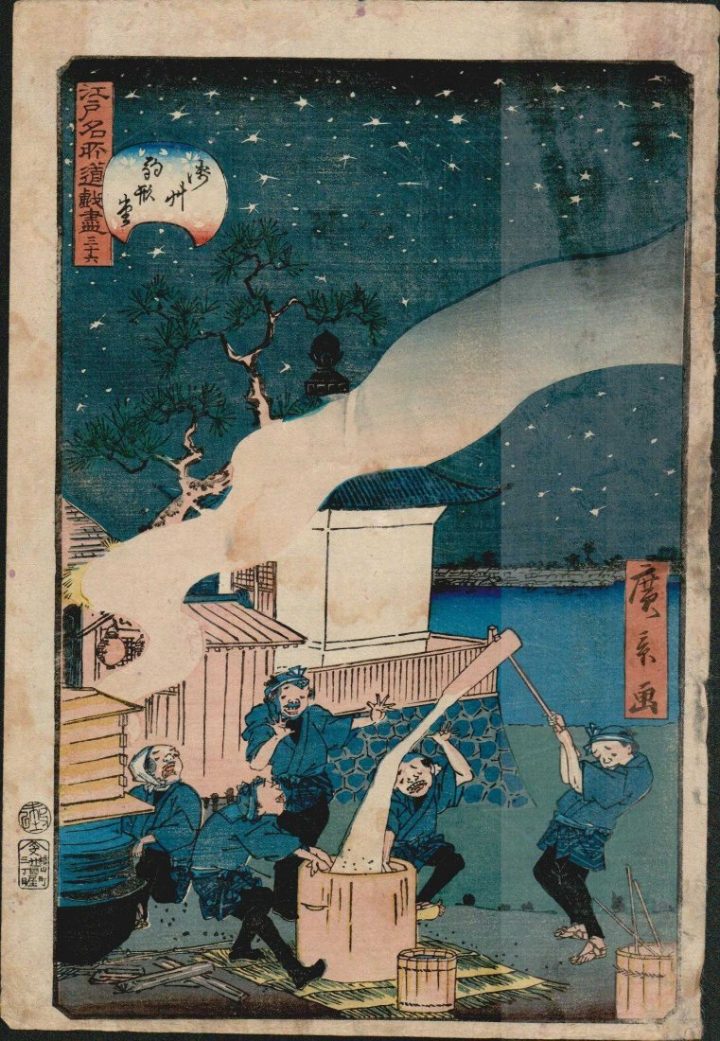
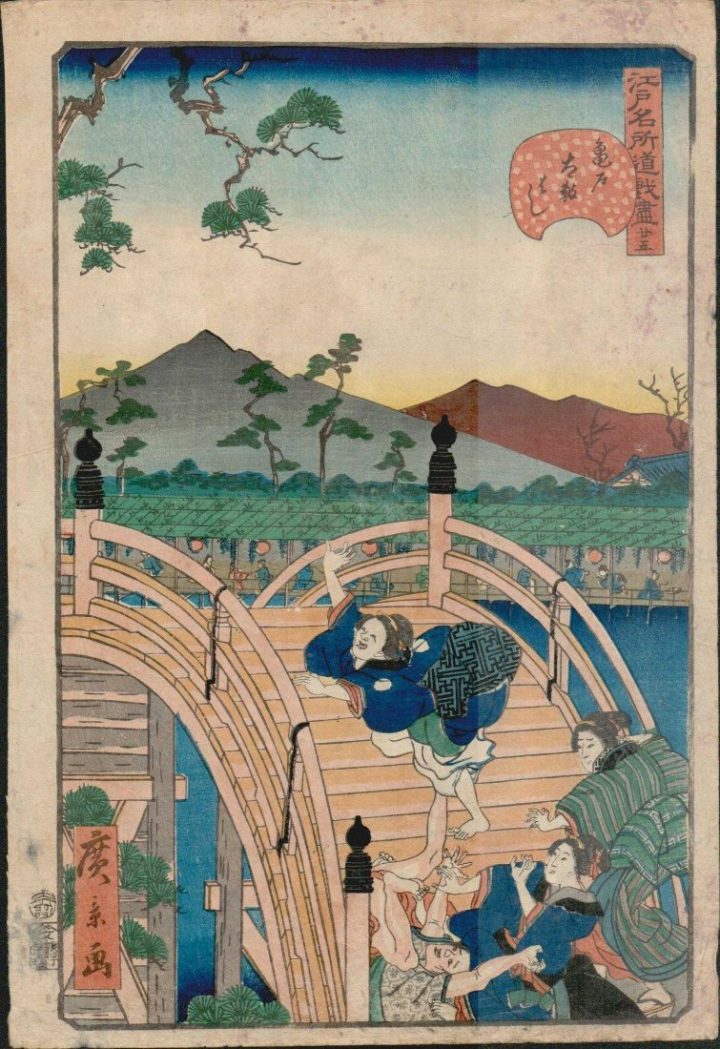





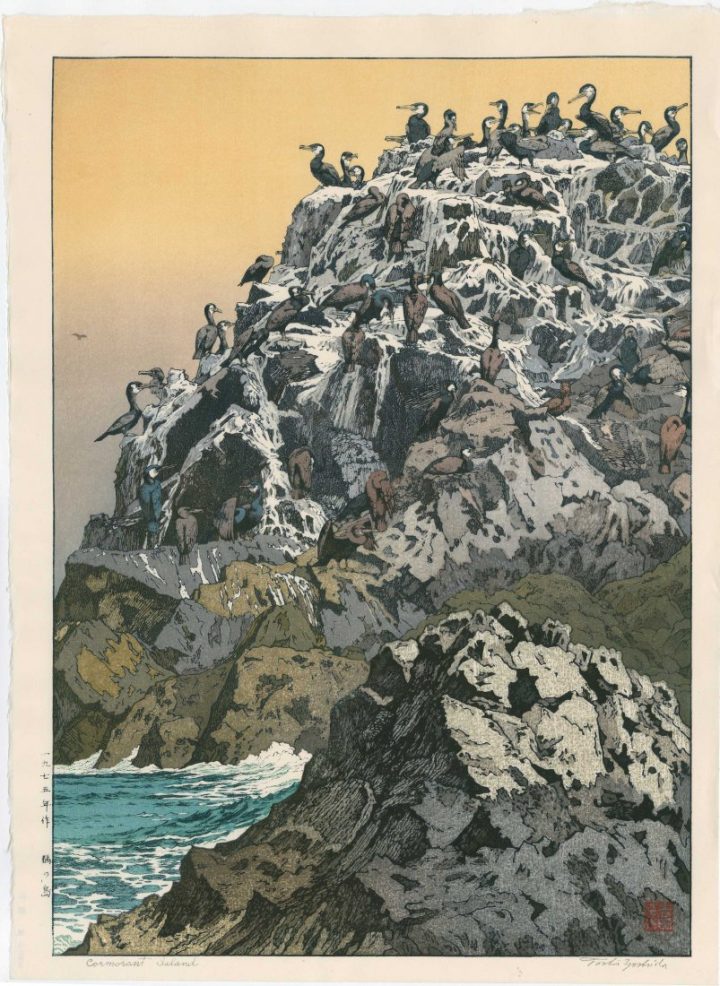
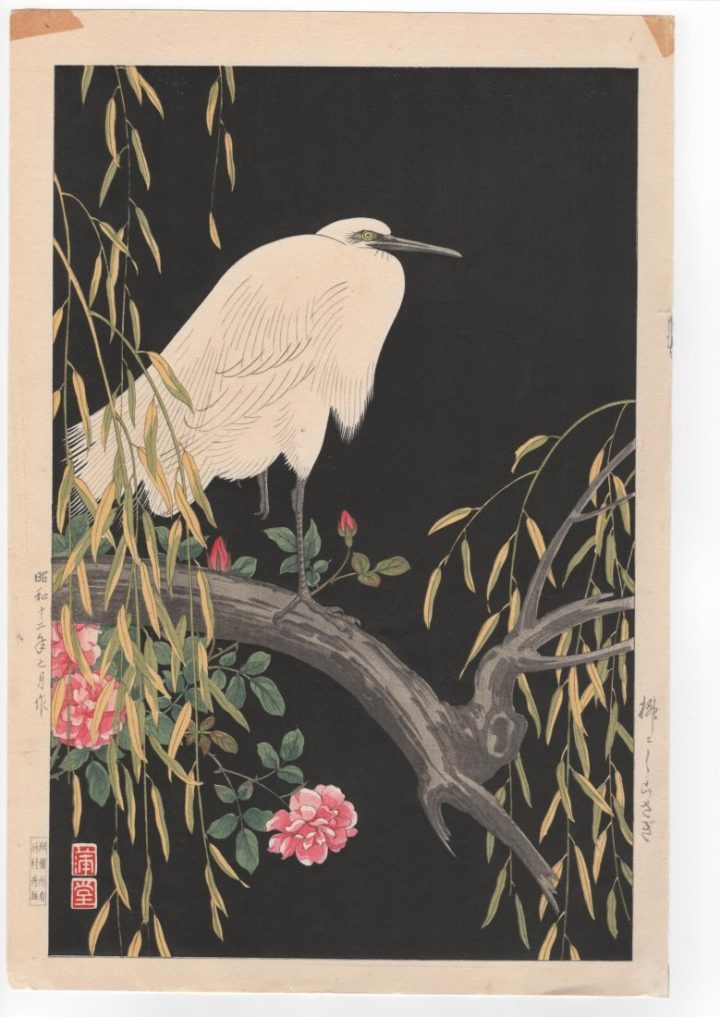


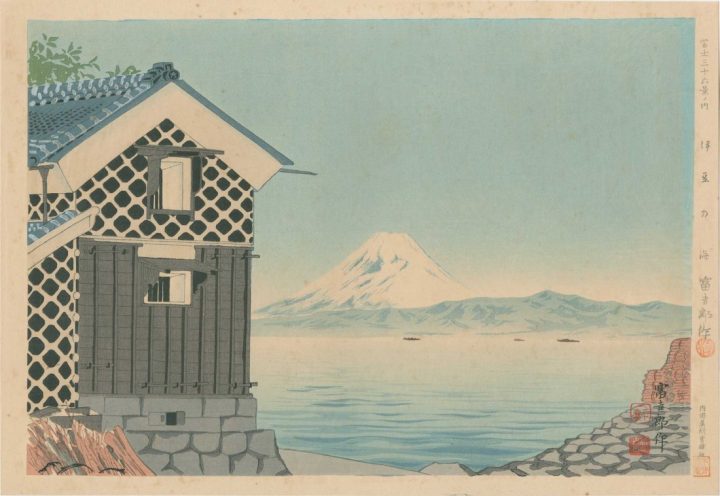
Jasper52’s Fine Japanese Woodblock Print Auction continues online through November 20.
- Get link
- X
- Other Apps
Comments
Post a Comment